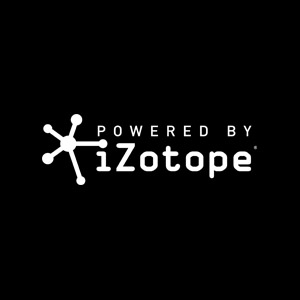
2019 Annual security report
2019 Annual Security Report / Family Educational Rights and Privacy Act (FERPA)
Introduction
The Conservatory of Recording Arts & Sciences (CRAS) is concerned about the safety and welfare of all campus members and guests. The following information has been prepared to increase your awareness of current programs that exist to protect your safety and well-being.
All student body, faculty and staff are encouraged to take responsibility for maintaining a secure campus environment by participating in the campus security programs and by reporting all suspected criminal actions and emergencies.
The annual security report is prepared by the Administrator by compiling incident reports from each campus along with working with local law enforcement to gather crime statistics for the campus and surrounding area.
Security Information
The Clery Act (Public Law 101-542 amended by P.L. 102-26) requires CRAS to create campus security policies and distribute crime statistics annually to all current students and employees. When a crime is reported, the situation will be evaluated and the proper authorities will be contacted. All information will remain confidential. The institution will respond administratively if a criminal offense involves a student or employee as an alleged offender.
CRAS campuses are open and facilities are available during working hours to all students and members of the academic community. All members of the community have a responsibility to report any suspicious behavior or incidents to campus management or to the local police. Access to campus facilities is restricted to employees and members of the college community in campus instructional facilities. Campus buildings have alarms and security cameras are in place throughout the campuses and parking lots.
All parking lots and campus facilities have exterior lighting in the evening. Campus staff regularly checks the lighting for any faults or lights that are out throughout the campus on regular rounds. Any burnt bulbs, faulty locks, broken items, or other issues are reported to campus management for the facility operator to address.
Awareness & Prevention
CRAS takes advantage of many opportunities to remind students and employees of campus security issues. Students are informed of CRAS’s campus security policy during orientation. Employees are informed during faculty meetings and during all-staff meetings. In order to protect the health and safety of students and employees, CRAS may have to disclose the identity of the individuals who have been involved in criminal activities on campus. Students involved in criminal activities on campus will be referred to the Director of Education and/or Administrator for disciplinary action. Victims or witnesses’ voluntary or confidential reports will be included in the annual disclosure of crime statistics.
CRAS does not have a written Memorandum of Understanding with local police.
Security Awareness
CRAS offers security awareness programs to inform the campus community of the security available on and off campus. Students are given the information at enrollment; employees are given the information when hired and each year through presentations, pamphlets and the annual security report.
Crime Prevention
CRAS offers crime prevention programs to inform the campus community of possible criminal activity and how to prevent it. The information is given to the students upon enrolling, and to employees upon hire and again each year through presentations, pamphlets, and the annual security report.
CRAS is dedicated to providing ongoing crime prevention and awareness for all of its employees and students. Through annual security reports such as this one, guest speakers at each of the campuses, and community involvement. CRAS seeks to identify areas of concern within the campus communities and address potential risks. Through law enforcement and community involvement, the campus community can learn how to better prevent the circumstances that lead to security breaches.
Auto Theft
Never leave your keys in an unattended car or attach a tag with your name and address to a key ring. Never leave the title in your vehicle. At night park your vehicle in a well-lit area with pedestrian traffic.
Staff Security
All CRAS Staff, Administration, and Instructors are considered Mandatory Reporters. A Mandatory Reporter is legally required to report any activities, directly or indirectly witnessed, that violate the School Code of Conduct, or report any otherwise suspicious behavior that might pose an immediate danger or threat to the CRAS Community to Campus Security Authorities. Campus Security Authorities are as follows:
- Kirt Hamm – Administrator
- Robert Brock – Director of Education
- Brett Atwood – Director of Project Staff
- Jason Losett – Director of Information Technology
- Ghery Fimbres – Director of Admissions
- Jason Pohlman – Director of Student Financial Services
- Jason Pohlman – Title IX Coordinator
While students are encouraged to report any suspicious activities they witness in their time at CRAS, students are not considered Mandatory Reporters.
Retaliation against any member of the CRAS Community for reporting said activities is expressly prohibited, and will result in disciplinary action, expulsion, or termination.
Emergencies
In an emergency situation in which the response of the police department, the fire department or medical assistance is required first dial 911, then notify the appropriate security authority below as soon as the crime had been committed or discovered.
Non-Emergencies
To report non-emergency criminal offenses occurring on campus, please notify one of the Campus Security Authorities or your instructor as soon as a crime is committed or discovered.
Emergency Notification Policy
In the case of an emergency, it is the Administrator’s, (or designee) decision to determine the severity of the situation and determine if outside authorities or the community is required to be notified. Once the Administrator determines who needs to be notified, how quickly they need to be notified and in what form action will be taken, notification can be written or verbal. The Administrator can enlist the help of other Directors to help disseminate the emergency information.
Communication During Emergency/Crisis Situations
In the event of an emergency, Directors, and other designated individuals will attempt to contact and notify all those that might be immediately impacted by the situation. Instructions/suggestions will be provided as clearly and expeditiously as possible, given the uniqueness of each individual situation communication modes may include:
- Announcements over intercom system;
- Telephone calls to individual classrooms and offices;
- Word of mouth;
- Going room to room to pass along information;
- Notes/memos;
- Posting to CRAS Connect system;
- Any other means of communication deemed appropriate and feasible given the uniqueness of each situation.
Emergency Drills, Testing and Evacuation
CRAS has a policy to test the emergency response plan and evacuation procedures at the minimum of once per calendar year. This test may be announced or unannounced. Results of the emergency test will be maintained at each campus location and available upon request.
CRAS is dedicated to a safe and orderly learning environment. This EMERGENCY ACTION PLAN is intended to be a guideline for faculty and staff to possibly prevent and resolve unexpected or unplanned events that physically or emotionally threaten staff and/or students. The best preparation for an actual emergency, however, is awareness in advance, and proper preventive measures all staff members are expected to review and know the information presented in this EMERGENCY ACTION PLAN.
This Emergency Action Plan takes into account the following:
- An emergency may occur at any time with little or no warning.
- Emergencies occurring at CRAS will be responded to by Authorized CRAS Security.
- Personnel, who will assess the situation, determine the classification of emergency, and when applicable, begin the process of calling for needed responders. Responders may include Police, Fire, EMS, or other organizations based on the nature of the incident. When outside emergency responders are called to the school they will be given precedence and CRAS personnel will provide a support role.
- All CRAS faculty, staff, and students have a personal responsibility to be familiar with this plan and to know what to do in an emergency. Knowing what to do provides the best chances for personal safety.
- Emergency evacuation drills will be conducted a minimum of once per calendar year.
Familiarization and practical exercises are the keys to preparedness in an emergency situation. Directors should share appropriate drill and safety information with all students with whom they work.
All employees will receive an electronic copy of this plan. Directors should ensure that the location of the Plan is available for all designated adjunct faculty and other visiting faculty members. All training for the Emergency Action Plan will be governed by the Administrator or designated Director whenever an unusual event, emergency or crisis arises. During day time operations, several administrators will be available; during evening hours, the night school administrators should be advised of any unusual events.
Evacuation Procedures
When circumstances permit, evacuation from the school may be necessary. Events that might warrant an evacuation include but are not limited to:
- Natural disasters, including floods, earthquakes, wildfires, cyclones, or volcanic eruptions;
- Industrial accidents, including chemical spills, leaks, or hazardous material exposure;
- Structural failure of a building, in part or in whole
- Dangerous individuals, including active shooters or bombers
If you are in a position to alert the school to begin evacuation, you must access a security panel at either Tempe of Gilbert. The security panels are located in the following places:
- At Tempe, in the front office server room, on the West-facing wall behind the door.
- At Gilbert, near the front desk, outside the internship department’s door on the South- facing wall.
- At Gilbert, in the upstairs server room, towards the back on the room on the North-facing wall.
To alert the school to evacuate using the security panels, press and hold both the asterisk (*) and nine (9) key at the same time for a few seconds until the alarm begins.
At Tempe, in the server room, press the Evacuate button on the panel behind the door until the button turns orange.
If you are not in a position to access the security panels, immediately inform a staff member to begin evacuation by saying, “File 99.” This is meant to serve as an alternative to saying “evacuation” when doing so would incite unnecessary panic.
In all cases, when you are told to evacuate, leave the building immediately in an orderly manner using established evacuation routes. You can review the evacuation route for any room by viewing the map located near a door in that room. Evacuation routes are also available in this section of the Annual Security Report.
If you are upstairs at the Gilbert campus, use the staircases to evacuate. If you are unable to use stairs, go to the closest staircase and wait. Tell others leaving the building to inform officials of your location.
Take immediately available personal items with you (i.e., backpacks, purses, handbags, etc.), as these items may not be available to you for some time. Do not go back into a building to retrieve personal items.
Go to your designated gathering point.
- Gilbert Staff – Northwest side of the campus, next to the parking lot entrance.
- Tempe Staff – West of the campus, at the cul-de-sac past the gate in the parking lot.
- Mesa Staff – Southwest of the annex, in the parking lot outside of Princess Deli.
Instructors: Verbalize the designated gathering point to students when exiting.
Instructors: perform a student headcount to ensure all students are present and accounted for. If any students are missing, inform emergency response personnel or a campus security authority immediately.
Do not re-enter the building until directed to do so by campus security authorities, emergency response personnel or staff.
Fire Evacuation Procedures
In case of a fire, you will be alerted through either the fire alarm system or a staff member. You must immediately leave the facility when an alarm sounds or when asked by staff. Treat all alarms as real emergencies. Familiarize yourself with the exits, sounds and procedures for evacuating the building. Get to know at least two exit routes before there is an emergency.
In the event of a fire, activate the nearest fire alarm and notify campus security authorities immediately.
If you are in a position to alert the school to a fire, access a security panel at either Tempe or Gilbert. The security panels are located in the following places:
- At Tempe, in the front office server room, on the West-facing wall behind the door.
- At Gilbert, near the front desk, outside the internship department’s door on the South-facing wall.
- At Gilbert, in the upstairs server room, towards the back of the room on the North-facing wall.
To alert the school to a fire using the security panels, press and hold both the asterisk (*) and the seven (7) keys at the same time for a few seconds until the alarm begins.
At Tempe, in the server room, press the Fire button on the panel behind the door until the button turns orange.
If the fire alarm sounds, immediately do the following:
- Stay calm. Do not panic.
- Check the doorknob and door with the back of your hand.
- If either is hot, do not open the door. Exit through a window if you are on the first floor or summon help.
- If the door and doorknob are cool, exit cautiously and close the door behind you, if possible.
Walk quickly and leave the building via the nearest available exit in your area and alert others to do the same.
Inform your students of the exit route to use for evacuation, and specify the designated gathering point.
Smoke is the most dangerous element of a fire, so in the event that you are evacuating from an area filled with smoke, crawl on your hands and knees, keeping your head no more than 8-12 inches off the floor, where the air is less toxic.
Go to your designated gathering point. Follow all orders from authorized personnel.
Once at your designated gathering point, take a headcount your students. Report any missing persons to campus security authorities or emergency response personnel.
Do not re-enter the building until you are instructed to do so by emergency response personnel. Failure to exit in an immediate and orderly fashion, or re-enter the building before instructed to do so may result in disciplinary action.
If trapped in the building during a fire, do the following:
- Stay calm. Do not panic.
- Call 9-1-1 to notify emergency responders of your situation. Maintain contact with the emergency operator by telephone as long as possible.
- Keep all doors and windows closed.
- Stuff objects at door and window thresholds to prevent smoke from entering the area.
- If smoke begins to fill room, keep your head no more than 8-12 inches off the floor, where the air is less toxic. Shout at regular intervals to alert emergency crews of your location.
- Also, tell others leaving the building to inform officials of your location.
Power Outage Procedures
Remain calm. Campus security authorities will ask that you evacuate the campus and assemble in designated gathering points.
If in a room with sensitive equipment, turn all power off in the room. Campus security authorities and technicians will assist in powering down sensitive equipment.
Go to your designated gathering point. Follow all orders from authorized persons.Assume that all faculty and staff will continue to work. Generally most classes and activities will continue during daylight hours, if safe.
If power is out consecutively for more than one hour, class will be cancelled.
Do not reenter the building, or allow students to reenter, until you are instructed to do so by campus security authorities.
HVAC Failure Procedures
If the HVAC in your classroom is not working, report it to the Project Staff Director and Administrator immediately. If the problem fails to be resolved and the classroom temperature reaches above 85° or below 55°, as an instructor, you have the option to cancel and reschedule the class at the discretion of the Director of Education or the Administrator.
Shelter in Place Procedures
Shelter in Place events, sometimes referred to as a “Lockdown,” refers to the use of Conservatory property to temporarily separate the CRAS Community from an external hazard or threat. Shelter in Place events may be used for many reasons, including, but not limited to:
- Natural disasters (floods, tornadoes, etc.);
- Structural or building damage;
- Inclement weather;
- Dangerous persons. Dangerous persons, specifically “Armed Individuals,” will be covered in further detail in the following section.
In case of a Shelter in Place event, you will be alerted through an alarm system. Treat all alarms as real emergencies. Familiarize yourself with the exits, points of ingress, sounds and procedures for a Shelter in Place event.
If you are in a position to alert the school to begin the Shelter in Place procedure, you must access a security panel at either Tempe or Gilbert. The security panels are located in the following places:
- At Tempe, in the front office server room, on the West-facing wall behind the door.
- At Gilbert, near the front desk, outside the internship department’s door on the South-facing wall.
- At Gilbert, in the upstairs server room, towards the back of the room on the North-facing wall.
To alert the school to begin Shelter in Place procedures using the security panels, press and hold both the asterisk (*) and nine (9) key at the same time for a few seconds until the alarm begins.
At Tempe, in the server room, press the Lockdown button on the panel behind the door until the button turns orange.
If you are not in a position to access the security panels, immediately inform a staff member to begin the shelter in place by saying, “File 98.” This is meant to serve as an alternative to saying “shelter in place” or “lockdown” when doing so would incite unnecessary panic.
In the event of a Shelter in Place, return to your original classroom (if this can be safely done) and await further instruction.
If the Shelter in Place alarm sounds, immediately do the following:
- Stay calm. Do not panic.
- Confirm that no one is missing from your class. If someone is missing, inform a Campus Security Authority (if available) immediately.
- Close blinds, cover doors, and close windows as needed. Move away from any doors and windows. If unable to cover windows, stay out of sight lines.
- Follow all orders from authorized persons. Do not leave your location until instructed to do so by emergency response personnel or campus security authorities, or if an imminent threat is present.
- Follow up messages may be delivered via CRAS Connect, the Messages application, or Remote Desktop. Leave your computer on and connected to the network with the laptop volume turned up. Open Messages and CRAS Connect to check for messages, if possible.
Armed Individual Procedures
In the event of an armed individual or active shooter situation, we ask that you keep in mind your own personal safety. First and foremost, if it is safe to do so, call 9-1-1 immediately. Beyond notifying the authorities, when an armed individual is on campus, your options are to evacuate, hide, or take action, in that order. For additional expertise on how to handle situations such as these, google search “Run Hide Fight” which is how this type of situation is commonly referred.
Evacuation
If you are capable of evacuating, do so.
- Remain calm. Do not panic.
- Determine the most effective escape route available.
- Leave your belongings behind, as these belongings could hinder your escape.
- If your keys and cell phone can be taken without delaying your escape, bring these items with you.
- Keep your hands visible at all times.
- Follow all instructions from law enforcement or campus security authorities.
Hide
- If you are incapable of evacuating, find a safe place to hide.
- Remain calm. Do not panic.
- Determine the safest place to hide, out of the armed individual’s line of sight.
- Block entry to your hiding place.
- Lock the doors if possible.
Take Action
If you are incapable of evacuating, or finding a place to hide, take action against the armed individual. Understand this is a last resort, and the Conservatory of Recording Arts and Sciences would not recommend actively pursuing this option without first considering evacuation or hiding.
- When your life is in immediate danger, take action.
- Attempt to disable, disarm, or incapacitate the armed individual.
- Act with physical aggression.
- Throw items at the armed individual with the intent to incapacitate.
When speaking to law enforcement, provide the following information if available:
- Location of the armed individual(s)
- The number of armed individual(s)
- Physical descriptions of the armed individual(s)
- Number of weapons, and type of weapons possessed by the armed individual(s) (i.e. pistols, shotguns, rifles, explosives, et al)
- Number of potential victims and their locations
If the individual is an immediate threat to the school or is exhibiting potentially violent behavior, call 9-1-1 immediately. If the individual is not an immediate threat to the school or not exhibiting potentially violent behavior, contact campus security authorities immediately. If the individual is a student or employee, contact the Administrator or the Director of Education.
Sexual Harassment and Discrimination Policy
CRAS is committed to maintaining a community educational environment free from all forms of sexual harassment, exploitation, intimidation, or any other conduct or communications constituting Sexual Harassment as prohibited by federal and state law. CRAS regards all forms of sexual assault or misconduct (or attempts therein) as serious offenses that may result in suspension, expulsion, or termination of employment. CRAS has personal safety and sexual assault prevention programs in place and follows established procedures for reporting violations of policy and state or federal law, including contacting local law enforcement and assisting alleged victims.
Sexual harassment is defined as any unwelcome verbal or physical conduct of a sexual nature that is sufficiently severe, persistent, or pervasive that it unreasonably interferes with, limits, or deprives a student of the ability to participate in or benefit from any sanctioned CRAS class, program, or event.
Discrimination is defined by this policy as an unequal treatment of a student based on the student’s actual or perceived gender, sexual orientation, or pregnancy. CRAS policy prohibits sexual harassment and discrimination in any CRAS education program or activity.
Sexual Harassment Reporting
the event that a member of the CRAS Community witnesses sexual harassment, they are encouraged to report their concerns to the Title IX coordinator. The Title IX coordinator investigates allegations of sexual harassment, sexual assault, sexual violence, and sex discrimination. The Title IX coordinator also uses the CRAS Code of Conduct as they investigate allegations consistently with the requirements of federal law. The Title IX coordinator also affords interim action options for victims of sexual harassment, as well as provides resources for off-campus treatment and welfare.
Marisa Mavis
Title IX Coordinator
mmavis@cras.org
1205 N. Fiesta Blvd.
Gilbert, AZ 85233
(480) 858-9400
The following are typically Title IX concerns:
- Sexual harassment
- Sex or gender based harassment or discrimination
- Sexual violence
- Gender based stalking
- Relationship violence
- Pregnancy discrimination
- Sexual orientation harassment or discrimination
- Gender identity harassment or discrimination
Students are encouraged to report any concerns they may have to the Title IX coordinator. In the event that a student’s concern does not require administrative action or an investigation, the Title IX coordinator can still provide resources and support. Reporting concerns allows CRAS to take appropriate measures for the welfare of the student(s), and the well-being of the CRAS Community at large.
While sexual harassment and sexual violence are separate, distinct concerns, the reporting and investigation process for both is the same. The information that follows addresses how members of the CRAS Community can report these concerns, as well as the process regarding any subsequent investigations.
Sexual Harassment Procedures: Reporting
If you have experienced or witnessed a case of sexual harassment or discrimination that violates the Sexual Assault Policies of the CRAS Catalog, you can file a formal complaint by contacting the CRAS Title IX Coordinator. When filing a formal complaint:
- The complaint can be submitted either orally or in writing
- The complaint must be received within 100 calendar days of the act in question
- The complaint must include documentation of the act or behavior which you have identified as an act of sexual harassment or discrimination, including:
- specific names related to the act
- specific dates and times
- locations
- descriptions of the act or acts in question
Once you have filed a formal complaint, it will be reviewed by the Title IX Coordinator and the Administrator. The person accused of committing the act of sexual harassment or discrimination will be contacted within seven calendar days of receipt of the complaint with a copy of the formal complaint. The accused has fourteen (14) calendar days to respond to the formal complaint. The Administrator may impose interim measures at the recommendation of the Title IX Coordinator, including:
- changing scheduled class times for parties involved
- suspension of parties involved
- restriction of campus access
Sexual Harassment Procedures: Investigation
If the Title IX Coordinator accepts a formal complaint, or receives credible evidence supporting the occurrence of sexual harassment, sexual assault, sexual discrimination, or sexual violence based on a preliminary inquiry, the Coordinator will then conduct a formal investigation.
- Review written evidence (including formal complaint and accused’s response)
- Interview students and employees
- Determine the identity and contact information of the victim
- Conduct a thorough, reliable, impartial investigation
- Complete the investigation promptly (within 60 calendar days, unless complex circumstances regarding the complaint require a longer timeframe)
- Make findings based on the preponderance of evidence
- Deliver those findings, in writing, to the Administrator within 14 calendar days, with a recommendation on how to proceed
Administrator must provide written notification of any action taken, after having accepted, refused, or modified the recommendation, present the notification and the evidence gathered by the Title IX Coordinator to the victim, the accused, and the individual that filed the formal complaint within 14 calendar days.
At any stage of the formal complaint and investigation process, the victim, the accused, and the individual who filed the complaint may receive assistance from a third party of their choosing. This party can attend investigative interviews and advise individuals related to the complaint, but they cannot participate in the interview outright. The Title IX Coordinator will direct communication related to the complaint to the victim, the accused, or the individual who filed the complaint, and not through the party providing assistance.
Documentation regarding the formal complaint process (investigative notes, witness statements, etc.) will be maintained by the Administrator and the Title IX Coordinator. Investigative records are not to be maintained as part of that student’s official record or transcript. Documentation regarding corrective action, however, is considered part of the student’s official record.
Sexual Harassment Policies: Appeals
If any party related to the formal complaint is dissatisfied with the result of the investigation, that party can make a request in writing for reconsideration of the decision within 14 calendar days of the aforementioned written notification by the Administrator. This Request for Appeal should be submitted to the Administrator, and may be made if the party filing the request:
- Has new information previously unavailable during the investigation period
- Have procedural concerns that may change or affect the outcome of the investigation
- Perceives a lack of evidence to support the Title IX Coordinator’s findings
- Perceives any action taken by the Administrator to be too severe
The Administrator will review the investigation’s findings and all related materials, any newly submitted materials for investigation, and the Title IX Coordinator’s recommendation, and respond to the party within 14 calendar days from receipt of the appeal request. The Title IX Coordinator shall ensure that, prior to acting on any Request for Appeal, that the Administrator has been fully briefed regarding every component of the Conservatory’s Sexual Harassment and Discrimination policies.
If the Administrator determines that the investigation was not conducted in a fair and objective manner, the outcome of the investigation was inconsistent with the evidence presented, or disciplinary action taken was inappropriate given the nature of the allegations, the case file will be reopened and assigned for further investigation.
If the Administrator determines that the investigation was conducted in a fair and objective manner, the outcome of the investigation was consistent with the evidence presented, and disciplinary action taken was appropriate given the nature of the allegations, they will certify in writing that they have read and thoroughly considered all of the information collected in the investigation, the decision was consistent with the evidence presented, and deny the Request for Appeal. The written certification will be delivered to the individual who filed the formal complaint, the victim, and the accused within 7 calendar days after issued.
Bystander Intervention
CRAS encourages all community members, including faculty, students and visitors to take reasonable and prudent actions to prevent and stop an act of sexual harassment, gender based harassment, or sexual violence that she/he may witness. Although these actions will depend on circumstances, they may include direct intervention, calling law enforcement, or seeking assistance from a person in authority. In addition, CRAS encourages all community members to report an incident of sexual harassment, gender based harassment, or sexual violence that they observe or become aware of to a Campus Security Authority. Community members who choose to exercise this positive option will be supported by the College and protected from retaliation.
Emergency Prevention and Medical Emergencies
CRAS Community members must be responsible for their surroundings at all times. If you see something questionable or dangerous, say something.
Be aware of your surroundings:
- Unusual smells (gas leaks, illicit substances)
- Unusual sounds (yelling, threatening voices)
- Unrecognized individuals
- Persons who exhibit:
- Suspicious behavior, including drug or alcohol use
- Unexplained increase in absenteeism and/or vague physical complaints
- Depression/withdrawal
- Increased severe mood swings and noticeably unstable or emotional responses
- Increasing mentions of problems at home, school or work
- Increase in unsolicited comments about violence, firearms and other dangerous weapons and violent crime
Look for problematic body language:
- Nervousness
- Sweating
- Bloodshot eyes
- Dilated pupils
- Lethargy (low blood sugar, low insulin, sickness)
- Spasms, ticks
- Unconsciousness
- Dizziness/light-headedness
- Abnormal pulse
- Physical trauma
- Unintelligible speech
If you see any of the above behavior on campus, contact a campus security authority immediately. If any of this behavior is indicative of an immediate threat to someone’s safety, call 9-1-1 immediately.
If someone is in need of medical attention, call 9-1-1 and contact a campus security authority immediately. Do not move the individual in need of medical attention unless absolutely necessary. Do not clean up hazardous substances, bodily fluids and other related items. Preserving surrounding elements and evidence for emergency responders helps them to make more accurate diagnoses and help the individual more effectively.
In the event that a member of the CRAS Community is in need of assistance, ask instructors and staff for help by asking for “File 23.” This is meant to serve as an alternative to saying, “someone needs help now,” when doing so would incite unnecessary panic. Here’s a situation by which File 23 could be invoked:
A staff member hears a loud, disruptive, and potentially volatile argument coming from room 107. That staff member then, prior to entering room 107, would go into every other room asking instructors and staff members, “do you mind helping me with File 23 in room 107?” The staff members and instructors would then join that staff member and go to room 107 in an effort to quell the situation.
Student Responsibilities
At CRAS each student is expected to be familiar with the emergency procedures outlined in this document. Students are urged to be alert and aware of their surroundings at all times. On campus, students should:
- Know the evacuation chart for their classroom/studio each day. (Charts are clearly posted by the door of each room).
- Report any suspicious or questionable activity to an Instructor or Security Personnel immediately. Such activity may include (but is not limited to):
- Unattended bags or backpacks.
- Unfamiliar persons on campus.
- Erratic or unnatural behavior by any person(s).
- Any discussion of activity that may be harmful to persons or property.
- In the event of an evacuation, do not re-enter the building until CRAS Security Personnel have advised that it is safe to do so.
Requesting Emergency Assistance
Whenever contacting a governmental or other emergency response unit, those making such contact should be certain to provide the requested service with the following information:
- Caller name: Provide YOUR NAME
- Location of Road: Major cross streets
- College Phone Number: Give Main Line
- Emergency Cellular Number: Provide a Cell Number if possible
- Nature of Emergency: Fire, Earthquake, Bomb Threat, etc.
- Where to report: Main Entrance – meet Director
Assistance to Disabled Persons
Faculty and staff members are required to assist people with disabilities during evacuations and/or emergency situations. The school maintains that all students are encouraged and should assist individuals with disabilities whenever evacuation of an area is required; as some disabled individuals may require physical assistance, others may not. Assistance may be especially important in the event someone is on the second floor. Individuals with disabilities include people who use wheelchairs, have hearing, visual or mental impairments, and utilize crutches or walkers or others whose mobility is restricted or impaired in some manner.
Accidents Resulting in Physical Injury
CRAS requires all employees to perform their job functions as safely as possible. If safety training and/or protective equipment is deemed necessary by an employee, they should immediately contact their immediate supervisor to have the need met. When an accident occurs that involves physical injury, such must be reported immediately to a Director or designee, and the incident/injury report form must be completed and forwarded to the Administrator. Follow the steps below to ensure proper handling of an injury:
- All accidents resulting in physical injury are to be reported to the Directors.
- Ensure that faculty/staff, students, and guests are moved away from any dangers posed at an accident scene.
- Do not approach an accident scene unless it is safe to do so. If the scene area is unsafe, keep everyone away and wait for the Director, and or Police/Fire Department/Ambulance to arrive.
- Law prohibits dispensing medication or the treatment of injuries by anyone except a licensed or certified medical person. Faculty and staff members may administer basic First Aid, if trained to do so, when obviously needed.
- The decision to call Paramedics and/or the students’ family should be made by the Administrator or designee.
- Any Accident or Personal Injury to a student, employee, or faculty members will be reported to the Administrator within 24 hours.
Fire Alarm Procedures
At any time the fire alarm is activated, all non-administrative faculty and staff should promptly proceed to the nearest exit while assisting and directing all other faculty/staff, students and guests out of the building in accordance with the Campus Evacuation plan. Once outside, faculty and staff should work to quickly and efficiently move all individuals to a safe distance away from the building. Care should be taken to not allow people to stand in driveways, lanes, or other areas of ingress or egress to allow all people to evacuate the building and to allow emergency services vehicles and staff adequate and unobstructed access to the building(s). All faculty and staff should, prior to exiting the building if it is safe to do so:
- Close all windows and doors (leave doors unlocked)
- Lead the class and follow the evacuation route for the specific room or area
- Discourage talking so that emergency commands may be given
- Exit immediately
- Do not permit re-entry into the building until the all clear has been given by a fire department official, administrator or other Director.
In the event of a fire alarm after 5:00 p.m., Monday through Friday, Senior Faculty member will oversee evacuation for any emergency situation.
Guns and Weapons
In the event someone is known to have a firearm or other deadly weapon, contact a Director immediately. Do not confront the individual yourself. If a firearm or other deadly weapon is pulled, remain calm, without endangering yourself, do what you can to notify the Administrator or other employee. Talk in a controlled manner with the individual.
In the event of an active shooter situation, all individuals should evacuate the building/area immediately to an area of safety and immediately call 911.
There are five additional suggestions offered in the event of an active shooter:
- If you are in a room without a safe exit, shut the door, lock it and barricade it if possible. Once the door is secure, move away from it and lie on the floor. If the gunman begins shooting through the door, lying on the floor will minimize your chances of being struck by a projectile.
- If you cannot get to a room with a lockable door, find concealment – that is, hide and lie as flat on the floor as possible to avoid being struck by random bullets that may be sprayed by a shooter.
- If you cannot find a lockable room and/or concealment and the shooter is immediately present, play dead.
- If all else fails, give in to whatever demands are made by the shooter.
- Also know that the school affirms your right to defend yourself against imminent danger. While such is not generally recommended in an armed encounter, if you are certain you will be harmed, fighting an attacker may be required and the right to self-defense is affirmed.
Hazardous Chemical / Biological Warfare Exposure
All members of the CRAS community are reminded to always be aware of the potential for exposure to hazardous chemicals and/or biological agents. Individuals who have responsibility for handling hazardous chemicals should insist upon proper training prior to working with hazardous chemicals. Likewise, supervisors are required to provide proper training to their employees prior to assigning them to a job duty that requires handling hazardous chemicals. The Directors maintain information on chemicals known to be stored and utilized on campus.
Individuals should also be aware of the potential for exposure to chemical warfare that may include biological agents should CRAS be targeted for a chemical or biological attack. Individuals should follow the steps listed below to help minimize exposure and release of chemical or biological agents. Chemicals and hazardous materials should be labeled.
- Do not open any container, envelope or package with unknown, suspicious or no return address. Do not attempt to investigate containers or packages that are leaking oil or powder residues.
- If in doubt about an envelope or package, contact the Administrator or other Director. Leave the package untouched and undisturbed. Shut off all fans and/or ventilation that may be in the area.
- If such an item is opened and it is reasonably believed to be biologically or chemically contaminated, shut off all fans and/or ventilation that may be in the area and contact a Director who will notify public authorities. A building evacuation may be instituted using the same instructions as written in the fire alarm policy.
- Secure the hazardous area and wait for further instructions from public authorities.
- Students and other staff in the building need to remain in an area away from the building until released by medical personnel.
- Remain calm and follow all instructions.
Hostage Situations
In the event of a hostage situation, if you are not involved, quietly remove yourself from the area and notify a Director immediately. Employees should stay away from the scene but attempt to establish a wide perimeter to prevent others from wandering into the situation. If you are part of the situation, remain calm, avoid quick movements and cooperate with the hostage-taker. If a hostage situation occurs in your classroom or area of supervision:
- Remain calm and controlled. Help your students stay calm. Avoid quick movements. Do not panic.
- Follow the directions of the hostage-taker. Tell your students to do the same. Do not try to attack or disarm the hostage-taker.
- Do not bargain or negotiate with the hostage-taker. If you wish to talk to the hostage taker, ask for permission to speak. Face the hostage taker when speaking and do not crowd his/her space. Be respectful, never critical. Do not argue.
- Try to make a mental list of what happens during the incident.
- Trust the police negotiators. Follow their instructions completely.
- Stay alert. Evacuate students, staff, and employees as quickly as you can, and attempt escape ONLY if the hostage taker falls asleep from exhaustion.
Odd / Suspicious / Concerning Behavior
As a professional who has chosen to work within the field of higher education, you may occasionally encounter a student or colleague who displays behavior that may be considered odd, suspicious or frightening. Such behavior may include a sudden change in appearance and/or hygiene, threatening or inappropriate comments, disturbing or frightening ideas or thoughts expressed in writings and class assignments and rumors or gossip about a particular student or group of students. If you feel the student may be a danger to himself/herself or others, you should report the information to a Director. Any supporting information and/or documentation should be provided at the time of the report to help in the evaluation of the situation.
The Director will evaluate the situation, and make a determination as to how to proceed. While there are no sure and certain predictors of violence, there may be certain indicators that are observed to help guide the administrator in his/her decision making process. Warning signs of impending violence may include but are not limited to:
- A known past history of violent behavior;
- Displays of violence in writing or art. Sometimes, violent or bizarre depictions can be products of a psychotic mind;
- Loneliness and social isolation which suggests few may be in a position to identify and report violent tendencies or extreme behavior;
- Stalking and other antisocial or extreme behavior;
- Hallmark behaviors of paranoia which may suggest mental illness. Paranoid behaviors may include whispering to oneself; taking an inordinately long time to answer a question, expressed suspicion that one is being followed, their conversations recorded or that people are watching them;
- Sometimes evident is a bizarre and inappropriate facial affect.
Certainly, not all individuals that exhibit odd behavior are psychotic or violent. However, professionals should “trust their gut” and report behavior and situations that do not seem “right”. Administrative and other professionals must deal carefully with situations involving behavior as described above. Oftentimes, disabilities that manifest themselves in the form of odd behavior may simply be a byproduct of a disability and such may need to be accepted and accommodated in the normal course of the educational process. Administrators and staff must also understand the unique position in which they are in and the protections afforded disabled persons. Disabilities cannot usually be disclosed to members of the school community even to satisfy concerns over odd behavior. These situations require delicate and sensitive handling and due regard for not only the safety of the community, but for the privacy and wellbeing of the student who is the subject of the report. For these reasons as well as others, Directors and administrative staff should take every report seriously and consider how best to deal with each situation. When dealing with a report of odd behavior, over-reactions and under-reactions must be guarded against.
For faculty and staff who report concerning behavior to members of the administration, remember, information cannot always be returned or provided to the reporting individual about a student’s known situation. Privacy laws usually shield students’ mental illness from disclosure to most individuals. Even if a student is believed, by institutional officials, to be a threat to himself or others and is required to undergo a psychological evaluation, the written opinion of a licensed physician/psychiatrist is usually the deciding factor as to whether or not a student is committed for medical treatment and/or whether or not they will be allowed to continue in school.
Power Failure
In the event of a power failure that is not related to any other type of emergency/crisis situation, instructors should, during the day and if their classroom is equipped with windows, open the blinds and continue with their lecture/class discussion with as little interruption as possible. Normally, power is restored to campus buildings within a fairly short amount of time and a disengagement of the learning process is normally not warranted for a non-weather related power outage.
A flashlight or other battery lighting devices should be kept at the front desk at all times.
The decision regarding whether or not classes will be canceled will be made by the Administrator of other Director. Once power is restored, all operations should return to normal as quickly as possible, report any problems, concerns or issues that arise during a power outage to the Administrator.
Threats / Threatening Phone Calls
In the event of a threatening phone call, DO NOT HANG UP ON THE CALLER. Try to get as much information as possible Be certain to write down the following:
- Time
- Phone number received from if known
- Name of caller if provided or known
- What type of threat (Bomb Threat, Death Threat, Biological Attack, etc)
- If a bomb or gun threat, where is the bomb or gun located?
- If it is a bomb, when will the timer start or when will it explode?
- Listen to surrounding noise (Music, traffic, background noise) to see if anything sounds familiar to help narrow down where the caller is calling from.
- Ask why he or she is doing this. Carefully document the answer.
If the threat is made in writing, do not handle the document more than necessary and do not allow multiple people to touch the note. The Administrator and/or Director will determine if a building or the campus is to be evacuated. The Administrator of designee will make all decisions regarding the cancellation of classes.
No one other than the Administrator and/or other Directors should be notified about the threat until an initial evaluation of the situation is complete and local authorities and emergency responders notified If evacuation of a building and/or the campus is deemed necessary, various methods may be used to avoid panic and to minimize danger to the CRAS community.
Earthquake
In the event of an earthquake, seek shelter under a hard surface such as a sturdy desk, counter, table, or stand in a doorway or corner of a room. If you are outside, move to an open area away from buildings, trees, light poles and power lines. After a quake, gather your valuables and leave the building quickly. If necessary, assist those with mobility impairments or disabilities. Assist those with injuries but do not move seriously injured people unless remaining in the building poses a greater risk than their apparent injuries. Following a quake, aftershocks will likely follow and while aftershocks are usually less powerful than the original quake, they may still be strong enough to bring down weakened structures. For this reason, evacuation to a safe zone away from buildings, power lines, trees, etc.., is indicated – this could be the same location as designated for a fire emergency.
Tornado
In the event of an approaching tornado personnel should take cover immediately in an interior area away from windows. Individuals should assume a protective posture against a wall or locate cover under a hard surface such as a sturdy desk, counter or table. A protective posture includes:
- Sitting with one’s back to a wall
- Knees should be tightly drawn up to one’s chest
- Face should be positioned between the knees
- Hands or books should cover the head if one is unable to take cover beneath a desk, table or counter
- Staff and faculty should try to keep everyone as quiet as possible so instructions may be given
Following a tornado, avoid downed power lines and provide first aid to injured individuals if indicated.
Death of a Student
If a student passes away on campus or during a school sponsored and/or controlled event, the Administrator will make the determination, at that time, as to who will contact the student’s next of kin. Faculty and staff members are prohibited from releasing information of a student’s death, when known, until proper notification is made to the next of kin. When a student death occurs, the scope of the response will depend on the situation and the circumstances surrounding the death. Each situation will be different and the institutional response will be in a manner subjectively deemed appropriate by relevant members of the administration. Efforts will be made to provide wellness sessions and, possibly, counseling sessions with licensed therapists if such need is apparent. Faculty and staff members are reminded that FERPA, HIPAA and other privacy laws continue to protect a student’s privacy, even after their death, and, therefore, disclosure of information about a student’s grades, attendance, health, etc., remain protected by relevant legislation. The release of personal data and/or information following the death of a student may violate applicable privacy laws and CRAS employees are cautioned to continue to follow institutional policies and privacy laws from the local, state and federal levels.
Emergency / Crisis Situation Aftermath
Once a crisis has concluded, everyone should work together to make every effort to return to normal operations as quickly as possible. Students will need the routine of normal procedures to provide the positive environment in which they are accustomed to learning. If deemed necessary and appropriate, the school will provide wellness advising services and counseling services may be arranged if it is believed the situation warrants such. The administration’s response will be based on subjective professional judgment. These subjective judgments will determine the extent to which this procedure will be implemented and the length of time after the crisis that advising and/or counseling will be available. All faculty and staff members should continue to monitor the school community for any problems or situations that may occur during a period of aftermath. Problems/situations that do emerge should be immediately reported.
Conclusion
CRAS will strive to operate the safest institution possible by planning for and taking preventative measures against emergency/crisis situations. To plan for each and every emergency or crisis situation would be practically impossible and the scope of this plan is not intended to address every possibility. This plan does seek, however, to provide CRAS students, faculty and staff members a framework of actions and responses that may help mitigate the damage and trauma that may be associated with a given event.
Program Policy Statements
The Conservatory of Recording Arts & Sciences (CRAS) has the following policies in place.
Security Awareness
CRAS offers security awareness programs to inform the campus community of the security available on and off campus. Students are given the information upon enrolling; employees are given the information upon hire and again each year through presentations, pamphlets and the Annual Security Report.
Crime Prevention
CRAS offers crime prevention programs to inform the campus community of possible criminal activity and how to prevent it. The information is given to the students upon enrolling and to employees upon hire and again each year through presentations, pamphlets and the Annual Security Report.
Alcohol and Drug Policy Statements
CRAS supports the Drug Free Schools and Communities Act Amendment of 1989 (Public Law 101-225). For a full description of our drug free policy, please refer to our Drug Abuse and Alcohol Prevention Program on our website.
Laws Regarding Alcohol and Drugs
Federal Penalties and Sanctions for Illegal Possession of a Controlled Substance
21 U.S.C. 844(a) – 1st conviction: Up to 1 year imprisonment and fined at least $1,000 but not more than $100,000, or both.
After 1 prior drug conviction: At least 15 days in prison, not to exceed 2 years and fined at least $2,500 but not more than $250,000, or both.
After 2 or more prior drug convictions: At least 90 days in prison, not to exceed 3 years and fined at least $5,000 but not more than $250,000, or both.
21 U.S.C.853 (a)(2) and 881(a)(7) – Forfeiture of personal and real property used to possess or to facilitate possession of a controlled substance if that offense is punishable by more than 1-year imprisonment. (See special sentencing provisions re: crack.
21 U.S.C. 881(a)(4) – Forfeiture of vehicles, boats, aircraft, or any other conveyance used to transport or conceal a controlled substance.
21 U.S.C. 844a – Civil fine of up to $10,000 (pending adoption of final regulations.)
18 U.S.C. 922(g) – Ineligible to receive or purchase a firearm.
Miscellaneous Revocation of certain federal licenses and benefits, e.g., pilot licenses, public housing tenancy, etc, are vested within the authorities of individual Federal agencies.
State of Arizona Penalties and Sanctions for Illegal Possession of a Controlled Substance
ARS13-3405 – Possession, use, production, sale or transportation of marijuana; classification
- A person shall not knowingly:
- Possess or use marijuana.
- Possess marijuana for sale.
- Produce marijuana.
- Transport for sale, import into this state or offer to transport for sale or import into this state, sell, transfer or offer to sell or transfer marijuana.
- A person who violates:
- Subsection A, paragraph 1 of this section involving an amount of marijuana not possessed for sale having a weight of less than two pounds is guilty of a class 6 felony.
- Subsection A, paragraph 1 of this section involving an amount of marijuana not possessed for sale having a weight of at least two pounds but less than four pounds is guilty of a class 5 felony.
- Subsection A, paragraph 1 of this section involving an amount of marijuana not possessed for sale having a weight of four pounds or more is guilty of a class 4 felony.
- Subsection A, paragraph 2 of this section involving an amount of marijuana having a weight of less than two pounds is guilty of a class 4 felony.
- Subsection A, paragraph 2 of this section involving an amount of marijuana having a weight of at least two pounds but not more than four pounds is guilty of a class 3 felony.
- Subsection A, paragraph 2 of this section involving an amount of marijuana having a weight of more than four pounds is guilty of a class 2 felony.
- Subsection A, paragraph 3 of this section involving an amount of marijuana having a weight of less than two pounds is guilty of a class 5 felony.
- Subsection A, paragraph 3 of this section involving an amount of marijuana having a weight of at least two pounds but not more than four pounds is guilty of a class 4 felony.
- Subsection A, paragraph 3 of this section involving an amount of marijuana having a weight of more than four pounds is guilty of a class 3 felony.
- Subsection A, paragraph 4 of this section involving an amount of marijuana having a weight of less than two pounds is guilty of a class 3 felony.
- Subsection A, paragraph 4 of this section involving an amount of marijuana having a weight of two pounds or more is guilty of a class 2 felony.
- If the aggregate amount of marijuana involved in one offense or all of the offenses that are consolidated for trial equals or exceeds the statutory threshold amount, a person who is sentenced pursuant to subsection B, paragraph 5, 6, 8, 9 or 11 of this section is not eligible for suspension of sentence, probation, pardon or release from confinement on any basis until the person has served the sentence imposed by the court, the person is eligible for release pursuant to section 41-1604.07 or the sentence is commuted.
- In addition to any other penalty prescribed by this title, the court shall order a person who is convicted of a violation of any provision of this section to pay a fine of not less than seven hundred fifty dollars or three times the value as determined by the court of the marijuana involved in or giving rise to the charge, whichever is greater, and not more than the maximum authorized by chapter 8 of this title. A judge shall not suspend any part or all of the imposition of any fine required by this subsection.
- A person who is convicted of a felony violation of any provision of this section for which probation or release before the expiration of the sentence imposed by the court is authorized is prohibited from using any marijuana, dangerous drug or narcotic drug except as lawfully administered by a practitioner and as a condition of any probation or release shall be required to submit to drug testing administered under the supervision of the probation department of the county or the state department of corrections as appropriate during the duration of the term of probation or before the expiration of the sentence imposed.
- If the aggregate amount of marijuana involved in one offense or all of the offenses that are consolidated for trial is less than the statutory threshold amount, a person who is sentenced pursuant to subsection B, paragraph 4, 7 or 10 and who is granted probation by the court shall be ordered by the court that as a condition of probation the person perform not less than two hundred forty hours of community restitution with an agency or organization providing counseling, rehabilitation or treatment for alcohol or drug abuse, an agency or organization that provides medical treatment to persons who abuse controlled substances, an agency or organization that serves persons who are victims of crime or any other appropriate agency or organization.
- If a person who is sentenced pursuant to subsection B, paragraph 1, 2 or 3 of this section is granted probation for a felony violation of this section, the court shall order that as a condition of probation the person perform not less than twenty-four hours of community restitution with an agency or organization providing counseling, rehabilitation or treatment for alcohol or drug abuse, an agency or organization that provides medical treatment to persons who abuse controlled substances, an agency or organization that serves persons who are victims of crime or any other appropriate agency or organization.
- If a person is granted probation for a misdemeanor violation of this section, the court shall order as a condition of probation that the person attend eight hours of instruction on the nature and harmful effects of narcotic drugs, marijuana and other dangerous drugs on the human system, and on the laws related to the control of these substances, or perform twenty-four hours of community restitution.
13-3408 – Possession, use, administration, acquisition, sale, manufacture or transportation of narcotic drugs; classification
- A person shall not knowingly:
- Possess or use a narcotic drug.
- Possess a narcotic drug for sale.
- Possess equipment or chemicals, or both, for the purpose of manufacturing a narcotic drug.
- Manufacture a narcotic drug.
- Administer a narcotic drug to another person.
- Obtain or procure the administration of a narcotic drug by fraud, deceit, misrepresentation or subterfuge.
- Transport for sale, import into this state, offer to transport for sale or import into this state, sell, transfer or offer to sell or transfer a narcotic drug.
- A person who violates:
- Subsection A, paragraph 1 of this section is guilty of a class 4 felony.
- Subsection A, paragraph 2 of this section is guilty of a class 2 felony.
- Subsection A, paragraph 3 of this section is guilty of a class 3 felony.
- Subsection A, paragraph 4 of this section is guilty of a class 2 felony.
- Subsection A, paragraph 5 of this section is guilty of a class 2 felony.
- Subsection A, paragraph 6 of this section is guilty of a class 3 felony.
- Subsection A, paragraph 7 of this section is guilty of a class 2 felony.
- A person who is convicted of a violation of subsection A, paragraph 1, 3 or 6 of this section and who has not previously been convicted of any felony or who has not been sentenced pursuant to section 13-703, section 13-704, subsection A, B, C, D or E, section 13-706, subsection A, section 13-708, subsection D or any other provision of law making the convicted person ineligible for probation is eligible for probation.
- If the aggregate amount of narcotic drugs involved in one offense or all of the offenses that are consolidated for trial equals or exceeds the statutory threshold amount, a person who is convicted of a violation of subsection A, paragraph 2, 5 or 7 of this section is not eligible for suspension of sentence, probation, pardon or release from confinement on any basis until the person has served the sentence imposed by the court, the person is eligible for release pursuant to section 41-1604.07 or the sentence is commuted.
- A person who is convicted of a violation of subsection A, paragraph 4 of this section is not eligible for suspension of sentence, probation, pardon or release from confinement on any basis until the person has served the sentence imposed by the court, the person is eligible for release pursuant to section 41-1604.07 or the sentence is commuted.
- In addition to any other penalty prescribed by this title, the court shall order a person who is convicted of a violation of this section to pay a fine of not less than two thousand dollars or three times the value as determined by the court of the narcotic drugs involved in or giving rise to the charge, whichever is greater, and not more than the maximum authorized by chapter 8 of this title. A judge shall not suspend any part or all of the imposition of any fine required by this subsection.
- A person who is convicted of a violation of this section for which probation or release before the expiration of the sentence imposed by the court is authorized is prohibited from using any marijuana, dangerous drug, narcotic drug or prescription-only drug except as lawfully administered by a health care practitioner and as a condition of any probation or release shall be required to submit to drug testing administered under the supervision of the probation department of the county or the state department of corrections, as appropriate, during the duration of the term of probation or before the expiration of the sentence imposed.
- If a person who is convicted of a violation of this section is granted probation, the court shall order that as a condition of probation the person perform not less than three hundred sixty hours of community restitution with an agency or organization that provides counseling, rehabilitation or treatment for alcohol or drug abuse, an agency or organization that provides medical treatment to persons who abuse controlled substances, an agency or organization that serves persons who are victims of crime or any other appropriate agency or organization.
13-3415 – Possession, manufacture, delivery and advertisement of drug paraphernalia; definitions; violation; classification; civil forfeiture; factors
- It is unlawful for any person to use, or to possess with intent to use, drug paraphernalia to plant, propagate, cultivate, grow, harvest, manufacture, compound, convert, produce, process, prepare, test, analyze, pack, repack, store, contain, conceal, inject, ingest, inhale or otherwise introduce into the human body a drug in violation of this chapter. Any person who violates this subsection is guilty of a class 6 felony.
- It is unlawful for any person to deliver, possess with intent to deliver or manufacture with intent to deliver drug paraphernalia knowing, or under circumstances where one reasonably should know, that it will be used to plant, propagate, cultivate, grow, harvest, manufacture, compound, convert, produce, process, prepare, test, analyze, pack, repack, store, contain, conceal, inject, ingest, inhale or otherwise introduce into the human body a drug in violation of this chapter. Any person who violates this subsection is guilty of a class 6 felony.
- It is unlawful for a person to place in a newspaper, magazine, handbill or other publication any advertisement knowing, or under circumstances where one reasonably should know, that the purpose of the advertisement, in whole or in part, is to promote the sale of objects designed or intended for use as drug paraphernalia. Any person who violates this subsection is guilty of a class 6 felony.
- All drug paraphernalia is subject to forfeiture pursuant to chapter 39 of this title. The failure to charge or acquittal of an owner or anyone in control of drug paraphernalia in violation of this chapter does not prevent a finding that the object is intended for use or designed for use as drug paraphernalia.
- In determining whether an object is drug paraphernalia, a court or other authority shall consider, in addition to all other logically relevant factors, the following:
- Statements by an owner or by anyone in control of the object concerning its use.
- Prior convictions, if any, of an owner, or of anyone in control of the object, under any state or federal law relating to any drug.
- The proximity of the object, in time and space, to a direct violation of this chapter.
- The proximity of the object to drugs.
- The existence of any residue of drugs on the object.
- Direct or circumstantial evidence of the intent of an owner, or of anyone in control of the object, to deliver it to persons whom he knows, or should reasonably know, intend to use the object to facilitate a violation of this chapter.
- Instructions, oral or written, provided with the object concerning its use.
- Descriptive materials accompanying the object which explain or depict its use.
- National and local advertising concerning its use.
- The manner in which the object is displayed for sale.
- Whether the owner, or anyone in control of the object, is a legitimate supplier of like or related items to the community, such as a licensed distributor or dealer of tobacco products.
- Direct or circumstantial evidence of the ratio of sales of the object to the total sales of the business enterprise.
- The existence and scope of legitimate uses for the object in the community.
- Expert testimony concerning its use.
- In this section, unless the context otherwise requires:
- “Drug” means any narcotic drug, dangerous drug, marijuana or peyote.
- “Drug paraphernalia” means all equipment, products and materials of any kind which are used, intended for use or designed for use in planting, propagating, cultivating, growing, harvesting, manufacturing, compounding, converting, producing, processing, preparing, testing, analyzing, packaging, repackaging, storing, containing, concealing, injecting, ingesting, inhaling or otherwise introducing into the human body a drug in violation of this chapter. It includes:
- Kits used, intended for use or designed for use in planting, propagating, cultivating, growing or harvesting any species of plant which is a drug or from which a drug can be derived.
- Kits used, intended for use or designed for use in manufacturing, compounding, converting, producing, processing or preparing drugs.
- Isomerization devices used, intended for use or designed for use in increasing the potency of any species of plant which is a drug.
- Testing equipment used, intended for use or designed for use in identifying or analyzing the strength, effectiveness or purity of drugs.
- Scales and balances used, intended for use or designed for use in weighing or measuring drugs.
- Diluents and adulterants, such as quinine hydrochloride, mannitol, mannite, dextrose and lactose, used, intended for use or designed for use in cutting drugs.
- Separation gins and sifters used, intended for use or designed for use in removing twigs and seeds from, or in otherwise cleaning or refining, marijuana.
- Blenders, bowls, containers, spoons and mixing devices used, intended for use or designed for use in compounding drugs.
- Capsules, balloons, envelopes and other containers used, intended for use or designed for use in packaging small quantities of drugs.
- Containers and other objects used, intended for use or designed for use in storing or concealing drugs.
- Hypodermic syringes, needles and other objects used, intended for use or designed for use in parenterally injecting drugs into the human body.
- Objects used, intended for use or designed for use in ingesting, inhaling or otherwise introducing marijuana, a narcotic drug, a dangerous drug, hashish or hashish oil into the human body, such as:
- Metal, wooden, acrylic, glass, stone, plastic or ceramic pipes with or without screens, permanent screens, hashish heads or punctured metal bowls.
- Water pipes.
- Carburetion tubes and devices.
- Smoking and carburetion masks.
- Roach clips, meaning objects used to hold burning material, such as a marijuana cigarette, that has become too small or too short to be held in the hand.
- Miniature cocaine spoons and cocaine vials.
- Chamber pipes.
- Carburetor pipes.
- Electric pipes.
- Air-driven pipes.
- Chillums.
- Bongs.
- Ice pipes or chillers.
ARS 4-244 – Unlawful Acts
It is unlawful for a licensee or other person to sell, furnish, dispose of or give, or cause to be sold, furnished, disposed of or given, to a person under the legal drinking age or for a person under the legal drinking age to buy, receive, have in the person’s possession or consume spirituous liquor. This paragraph shall not prohibit the employment by an off-sale retailer of persons who are at least sixteen years of age to check out, if supervised by a person on the premises who is at least nineteen years of age, package or carry merchandise, including spirituous liquor, in unbroken packages, for the convenience of the customer of the employer, if the employer sells primarily merchandise other than spirituous liquor.
ARS 4-246 – Violation; classification
- A person violating any provision of this title is guilty of a class 2 misdemeanor unless another classification is prescribed.
- A person violating section 4-244, paragraph 9, 14, 34, 42 or 44 is guilty of a class 1 misdemeanor.
- A person violating sections 4-229, subsection B or 4-244, paragraph 31 is guilty of a class 3 misdemeanor.
- In addition to any other penalty prescribed by law, the court may suspend the privilege to drive of a person under eighteen years of age for a period of up to one hundred eighty days on receiving the record of the person’s first conviction for a violation of section 4-244, paragraph 9.
- In addition to any other penalty prescribed by law, a person who is convicted of a violation of section 4-244, paragraph 42 shall pay a fine of not less than five hundred dollars.
- In addition to any other penalty prescribed by law, a person who is convicted of a violation of section 4-241, subsection L, M or N shall pay a fine of not less than two hundred fifty dollars. Federal law holds that any person, who distributes, possesses with intent to distribute, or manufactures a controlled substance in, or within one thousand feet of an educational facility, is subject to a doubling of the applicable maximum punishments and fines. A similar state law carries sanctions of up to five years of imprisonment and up to $100,000 fine for similar violations.
Federal Financial Aid Penalties for Drug Law Violations
A student who has been convicted of any offense under any Federal or State law involving the possession or sale of a controlled substance for conduct that occurred during a period of enrollment in which federal student aid was received shall not be eligible to receive federal student aid (including any grant, loan, or work assistance) during the period beginning on the date of such conviction and ending after the interval specified in the following table:
If convicted of an offense involving,
- The possession of a controlled substance:
Ineligibility period is:
First offense – 1 year
Second offense – 2 years
Third offense – Indefinite - The sale of a controlled substance:
Ineligibility period is:
First offense – 2 years
Second offense – Indefinite
Rehabilitation
A student whose eligibility has been suspended may resume eligibility before the end of the ineligibility period if the student satisfactorily completes a drug rehabilitation program that is approved by the U.S. Secretary of Education.
Additional Resources Available
Phoenix / Tempe
- Al-Anon Family Information 602-249-1257
- Alcoholics Anonymous 602-264-1341
- CASA Rape & Assault 602-254-9000
- Child Abuse Hotline 888-767-2445
- Community Information and Referral 602-263-8856
- Interfaith Counseling 602-248-9247
- Jewish Family & Children Service 602-279-7655
- LDS Family Services 480-968-2995
- Lifeline (Emergency Medical) 602-263-8845
- Salvation Army Family Services 602-267-4122
- Sojourner Center 602-244-0089
- TERROS Drug Abuse 602-685-6000
Crime Statistics
In compliance with Public Law 102-26, the following information on campus crimes is reported for your review. The criminal offenses listed here were reported to the Administrator or local police agencies as having occurred on campus or in or on non- campus property.
- The crime data reported by the institutions have not been subjected to independent verification by the U.S. Department of Education. Therefore, the Department cannot vouch for the accuracy of the data reported here.
- These data do not include incidents that: (a) took place off campus on public property immediately adjacent to and accessible from the Campus; (b) took place on a non-campus building or property owned or controlled by a student organization that is officially recognized by the institution. or (c) incidents at buildings/property owned or controlled by an institution but is not contiguous to the institution. For further information, see http://ope.ed.gov/security.
Notice of Rights Under the Federal Educational Rights and Privacy Act (FERPA)
The Family Educational Rights and Privacy Act (FERPA) affords students certain rights with respect to their education records. These rights include:
- The right to inspect and review the student’s education records within 45 days of the day the school receives a request for access. A student should submit to the registrar, or other appropriate official, a written request that identifies the record(s) the student wishes to inspect. The school official will make arrangements for access and notify the student of the time and place where the records may be inspected. If the records are not maintained by the school official to whom the request was submitted, that official shall advise the student of the correct official to whom the request should be addressed.
- The right to request the amendment of the student’s education records that the student believes are inaccurate, misleading, or otherwise in violation of the student’s privacy rights under FERPA. A student who wishes to ask the school to amend a record should write the school official responsible for the record, clearly identify the part of the record the student wants changed, and specify why it should be changed. If the school decides not to amend the record as requested, the school will notify the student in writing of the decision and the student’s right to an appeal regarding the request for amendment. Additional information regarding the appeal procedures are provided in the CRAS Catalog.
- The right to provide written consent before the school discloses personally identifiable information from the student’s education records, except to the extent that FERPA authorizes disclosure without consent (i.e., directory information). The school discloses education records without a student’s prior written consent under the FERPA exception for disclosure to school officials with legitimate educational interests. A school official is a person employed by CRAS in an administrative, supervisory, academic or research, or support staff position (including law enforcement unit personnel and health staff); a person or company with whom the school has contracted as its agent to provide a service instead of using school employees or officials (such as an attorney, auditor, or collection agent); a person serving on the Board of Trustees; or a student serving on an official committee, such as a disciplinary or grievance committee, or assisting another school official in performing his or her tasks. A school official has a legitimate educational interest if the official needs to review an education record in order to fulfill his or her professional responsibilities for the school.
- The right to file a complaint with the U.S. Department of Education concerning alleged failures by the College to comply with the requirements of FERPA. The name and address of the Office that administers FERPA is:
Family Policy Compliance Office
U.S. Department of Education
400 Maryland Avenue, SW
Washington, DC 20202-5901
Directory Information is information on a student that the school my release to third parties without the consent of the student. CRAS has defined directory information as the student’s name, address(es), telephone number(s), email address, birth date and place, program undertaking, dates of attendance, honors and awards, and credential awarded. If a student does not want some or all of his or her directory information to be released to third parties without the students consent, the student must present such a request in writing to the Administrator within 10 days after the date of the student’s initial enrollment or by such later as the institution may specify. The only exception to this FERPA policy is that CRAS will disclose personally identifiable information from a student’s education record to necessary or appropriate parties if it is in connection with an emergency where knowledge of the information is necessary to protect the health or safety of the student or any other individual. This is a required health and safety exemption.Any questions regarding aforementioned notice should be directed to the Administrator or Director of Education.
Information & Security Program
General Privacy Policy:
The Conservatory of Recording Arts & Sciences (CRAS) carefully protects all nonpublic personal information in our possession regarding students and their families. The school will not release nonpublic, private, personal, or financial information about our students or applicants to any third party, except as specifically provided in this policy. The school will release certain nonpublic personal information to federal and state agencies, government contractors, student loan providers/servicers, and other parties as necessary for the administration of the federal student aid programs, for enforcement purposes, for litigation, and for use in connection with audits or other investigations. Disclosure is permitted to law enforcement or emergency services agencies in the performance of their duties or when student safety or health may be in jeopardy. The school will not sell or otherwise make available personal information for marketing purposes to any third party at any time.
Protection of Personally Identifiable Information: The school employs office procedures and password-protected computer systems to ensure the security of paper and electronic records. The school does not disclose specifics of its internal security procedures to students or the general public to protect the effectiveness of those procedures.
Access to social security numbers and other Personally Identifiable Information (PII) is strictly limited to those school officials with a need-to-know. Each department director is responsible for enforcement of this policy with regard to the information within his/her office. CRAS will be responsible for overall control of information release and will resolve any disagreements and make final decisions as necessary in accordance with this policy.
CRAS’s information is an important asset that is critical to providing an effective and comprehensive learning environment, openly communicating ideas, providing outstanding community service, and supporting the school’s operations. This information includes sensitive and personal student, faculty, and staff data as well as the school’s operational data. To maintain effectiveness and protect individuals, the school’s information assets must be protected from misuse, unavailability, destruction, and unauthorized disclosure or modification.
The executive leadership of CRAS is committed to protecting the value of the axhool’s information assets. The IT Department is charged with establishing and maintaining a program that preserves the confidentiality, integrity, and availability of information and information systems. This responsibility is addressed by:
- Continually assessing risks and defining appropriate protection strategies
- Complying with applicable legal and regulatory requirements
- Protecting the reputation, image and competitive advantage of the school
- Supporting CRAS’s strategic mission and goals
- Maintaining partnership with administrative units, faculty, and staff to ensure a collaborative approach to information security
The IT Department deals with numerous threats and challenges including data loss or theft, malicious software (e.g., viruses, worms, and Trojan horses), identity theft, social engineering, phishing scams, and risks associated with new technologies. Security measures also must be implemented to comply with several laws and regulations that address student information (FERPA), financial information, individuals’ privacy data and individuals’ health information.
The IT Department offers a wide range of products and services to address information security risks and requirements. These offerings are designed to balance strategic, tactical, and operational needs, and they include the following specific products and services:
- Security policies, procedures, standards, and methodologies
- Password change and enforcement policies
- Security awareness and training
- Legal and regulatory compliance
- Security strategy, architecture, and technologies (including technologies to protect against malicious software)
- Technical system configurations and vulnerability management
- Response to information security incidents or breaches
- Security requirements for software development and acquisition
- Disaster recovery, offsite backups, and continuity planning
- Firewalls with anti-virus protection and strict limited remote access
Policies and procedures provide the foundation of an effective information security program and define minimum requirements for protection of information. The IT Department of CRAS has developed and implemented policies that specify appropriate controls and conduct. These policies have been approved by the school’s executive team, are applicable to all faculty, staff, and students, and they are required to be followed. Any suspected information security breach or issue should be reported immediately to the IT Department.
Copyright Notice
The following is a statement from the CRAS Audio Business Department:
Acquired music should always be purchased. There are three main reasons for this:
- It’s the right thing to do.
- It helps support deserving artists and songwriters.
- There are severe penalties for not paying.
The Effects of Copyright Law
This is a simplified explanation of Copyright Law: Only the copyright owner of a work can make copies of it in any form. Period. Anyone else who wants to copy any part of this work must get a license, negotiate and agreement, or get permission in some form.
Copyright means ownership of rights; of songs, musical compositions, movies, videos, video games and other types of creations. The original copyright owners of such creations often sign their rights over to a company – a record label or a publisher or a video game company, etc., and then they became the copyright owner.
Copyright laws should be taken very seriously. If not obeyed, offenders of these laws could face high fines and possibly even prison time.
Legally, consumers must pay for what they acquire. If not, they are infringing upon the rights of the copyright owner. Some examples of infringement would be:
- Downloading songs, albums or videos without paying for them
- Uploading songs, albums or videos to a file sharing site
- Making a copy of a song, CD or video for a friend (or many friends)
- Making a copy of software for others (or accepting a copy from someone else)
- Making more than one copy of something one has legally acquired…even for their own use
- Sampling without permission of the copyright owners of the recording and the song
- Recording a released song without obtaining a Compulsory (Mechanical) License
- Any other form of acquiring copyrighted material without paying for it More information on copyright law and penalties can be found on these websites: riaa.com copyright.gov
Copyright infringement is the act of exercising, without permission or legal authority, one or more of the exclusive rights granted to the copyright owner under section 106 of the Copyright Act (Title 17 of the United States Code). These rights include the right to reproduce or distribute a copyrighted work. In the file-sharing context, downloading or uploading substantial parts of a copyrighted work without authority constitutes an infringement.
Penalties for copyright infringement include civil and criminal penalties. In general, anyone found liable for civil copyright infringement may be ordered to pay either actual damages or “statutory” damages affixed at not less than $750 and not more than $30,000 per work infringed. For “willful” infringement, a court may award up to $150,000 per work infringed. A court can, in its discretion, also assess costs and attorneys’ fees. For details, see Title 17, United States Code, Sections 504, 505.
Willful copyright infringement can also result in criminal penalties, including imprisonment of up to five years and fines of up to $250,000 per offense.
For more information, please see the Web site of the U.S. Copyright Office at www.copyright.gov, especially their FAQ’s at www.copyright.gov/help/faq


























